new posts in all blogs
Viewing: Blog Posts Tagged with: Common Core Standards, Most Recent at Top [Help]
Results 1 - 25 of 33
How to use this Page
You are viewing the most recent posts tagged with the words: Common Core Standards in the JacketFlap blog reader. What is a tag? Think of a tag as a keyword or category label. Tags can both help you find posts on JacketFlap.com as well as provide an easy way for you to "remember" and classify posts for later recall. Try adding a tag yourself by clicking "Add a tag" below a post's header. Scroll down through the list of Recent Posts in the left column and click on a post title that sounds interesting. You can view all posts from a specific blog by clicking the Blog name in the right column, or you can click a 'More Posts from this Blog' link in any individual post.
RL.5.6. Describe how a narrator’s or speaker’s point of view influences how events are described.That's the 5th grade reading (literature) standard we're just beginning to work on in my class. So that my students can better understand what's expected of them, we deconstructed the standard, brainstorming around these words:
describe, narrator, speaker, point of view, view, and
influence. Next, we rewrote the standard in our words. Then, I gave them this poem and a series of scaffolded questions that would lead them to describing how the speaker's point of view influences how events are described.
FLIGHT
Outside my apartment
is a small patch of grass
and a parking lot.
Beyond that is a ditch
full of dirty snow and trash.
But across the road
are power lines
where a hawk often perches
long enough for me to sketch.
©Mary Lee Hahn, 2015
Lo and behold, it worked! Not all, but some, realized that the point of view of the speaker is that of an artist, and "they see everything that is ugly but they can make it beautiful." The speaker will "make things better in the picture." And "An artist can see in detail, and they can make art out of whatever they see." Not bad for a first try.
We continue our discussion with word wizard
Rebecca Colby as she travels around the world, celebrating her book,
It’s Raining Bats & Frogs! Enter to win the overall giveaway for a $50 USD Amazon voucher (or £30 GBP Amazon voucher) at the end of the tour. You’ll find details about the tour
here!
And who doesn’t love a scavenger hunt! Follow Rebecca’s tour to find out which blogs contain the clues and then collect all the answers. There are eight answers to find and submit in total.
So what should you be looking for? Witch names, of course! Each post will mention a fictitious witch somewhere in the discussion. To be in with a chance of winning, leave a comment on the blog where you found the name (but please DON’T reveal the name) , including Teacher Authors! At the end of the tour, send Rebecca (at website address
here) a list of all eight names via her website contact page, and enter the Rafflecopter entry form on her page. You have until 11.59pm EST on 5 September to enter the scavenger hunt giveaway!
Today, Rebecca talks about her process how a writer (and a teacher) can create a teacher’s guide that teachers can use! Thank you, Rebecca!
When I began teaching, I was gobsmacked to learn how much the profession had changed from when I attended school. Gone were the handy, school-supplied textbooks that provided teachers with lesson plans and worksheets. Instead, I found myself spending all of my free time creating my own lesson plans and worksheets, or researching teacher websites for appropriate resources. My full-time teaching job quickly became two full-time jobs.
After publishing my first book, I was determined to make my book as accessible and as desirable as possible to teachers. Teachers are the busiest people I know! If I wanted teachers to use my book in the classroom, I knew I needed to both create the resources AND bring them to the teachers.
By the way, here’s a scavenger hunt answer for you--today’s witch name is Ethel. Pinpoint your book’s USP One of the first things you need to do is pinpoint what your book’s unique selling point (USP) is in respect of teachers using it in the classroom. How does it fit in with what is taught?
My first book was about a wee lassie who swallows all manner of Scottish birds and animals. The USP was obvious: I placed my primary focus for the activity guide on Scottish wildlife and their habitats. However, with my second book, which is about a witch parade, the USP wasn’t as clear. I focused on several aspects of the book—after all, witches aren’t a typical classroom topic. So while the main English activity asked children to create their own rhyming spells, math found them comparing and ordering the size of frogs, science had them playing a game of bat and moth to learn about echolocation, and art saw them creating musical rainsticks.
Research relevant curriculums Find out what is being taught at what grade level. The best way to do that is to research both The
Common Core Standards and state curriculums. While researching your own state’s curriculum is a good place to start, keep in mind that unless your book releases with a regional publisher, then you also need to look at other states’ curriculums—particularly curriculums for the larger (and often bellweather) states. Two good examples are
California and
Texas.
Make teachers happy Just producing an activity guide is sure to make a teacher happy, but if you want to go that extra mile, think about two things: 1) How can I make the activities cross-curricular? and 2) How can I extend children’s learning?
While my guide is cross-curricular and covers most subjects taught in school, some of the individual activities are also cross-curricular. For example, the art activity involves making a witch puppet, which can later be used in English to act out and retell the book. In this way, one activity allows for learning in two areas of the curriculum.
Teachers are also always looking for ways to extend children’s learning. In one of my science activities, children are asked to measure rainfall over the course of a week. This can be done simply by marking water levels on the side of the rain collection container with colored felt-tip pens and comparing levels. But if a teacher wishes to extend children’s learning and introduce standard units of measure (or the teacher wants a differentiated activity for more able students), he or she could ask the children to measure the rainfall in inches or centimeters with a ruler.
Where to share Now that you have your guide, what do you do with it? I always make mine available as a download from my website. But teachers are incredibly busy, remember? Bring the guide to them. Post it on websites like
Teachers Pay Teachers and
Share My Lesson. Forward it to your publisher. They often hold a database full of educational contacts. Bring hard copies of the guide to library, festival, and bookstore event. And if you have some spare time, you could email teachers and let them know about your guide. After all, you’re probably going to email a few teachers anyway to see if they’d like to set up author visits with you. Mention the guide and where to find the download in the email.
Speaking of which, if you’re interested in downloading the free teacher’s activity guide to
It’s Raining Bats & Frogs, you can find it
here.
I want to say thank Teaching Authors for hosting me again today, and to all of you for reading this post! If you have any tips of your own, or if you decide to produce a guide for your book, I’d love to hear about it!
 |
| Illustration by Steven Henry |
Thank you for stopping by, Rebecca!
Bobbi Miller

Written by: Tim J. Myers
Illustrated by: Jess Smart Smiley
- Grade Level: 6 - 8
- Paperback: 144 pages
- Publisher: Familius (September 5, 2014)
- Language: English
- ISBN-10: 1939629217
- ISBN-13: 978-1939629210
-
Tim Myers engaging and humorous storytelling technique makes you feel like you are sitting in the audience at a one-man comedian show. Whoever thought food history could be so chuckling out loud fun?
With world history, healthy eating and get moving tips, and food history sprinkled throughout with “penciled” illustrations, Myers storytelling is an adventure not to be missed. The added appeal to Myers, Rude Dude is the classroom friendly lesson ideas designed around the common core standards.
I honestly did not know what to expect from Myers food book and was happily surprised of his one of a kind approach to such a broad topic. Applause, applause…all around. Add Tim Myers unique book to your book collection today and you will find yourself devouring it as if it’s your favorite meal. I’m off to cook something yummy, now that the author has awakened the grumbling in my stomach!
About the author: Tim J. Myers is a writer, songwriter, storyteller, and senior lecturer at Santa Clara University. His children’s books--12 out and three on the way--have won recognition from the New York Times, NPR, and the Smithsonian. He’s published over 130 poems, won a first prize in a poetry contest judged by John Updike, has two books of adult poetry out, and won a major prize in science fiction. He won the West Coast Songwriters Saratoga Chapter Song of the Year and the 2012 SCBWI Magazine Merit Award for Fiction.
~~~~~~~~~~~~~~~~~~~~~~~~~
Best wishes,Donna M. McDineMulti Award-winning Children's Author
Ignite curiosity in your child through reading!
Connect with Donna McDine on Google+A Sandy Grave ~ January 2014 ~ Guardian Angel Publishing, Inc. ~ 2014 Purple Dragonfly 1st Place Picture Books 6+, Story Monster Approved, Beach Book Festival Honorable Mention 2014, Reader's Favorite Five Star Review
Powder Monkey ~ May 2013 ~ Guardian Angel Publishing, Inc. ~ Story Monster Approved and Reader's Favorite Five Star Review
Hockey Agony ~ January 2013 ~ Guardian Angel Publishing, Inc. ~ Story Monster Approved and Reader's Farvorite Five Star Review
The Golden Pathway ~ August 2010 ~ Guardian Angel Publishing, Inc.~ Literary Classics Silver Award and Seal of Approval, Readers Favorite 2012 International Book Awards Honorable Mention and Dan Poynter's Global e-Book Awards Finalist

By:
jilleisenberg14,
on 5/17/2014
Blog:
The Open Book
(
Login to Add to MyJacketFlap)
JacketFlap tags:
common core standards,
CCSS,
ELLs,
Curriculum Corner,
guided reading,
ELA common core standards,
Institute of Education Science,
middle school,
Reading Aloud,
elementary school,
vocabulary,
US Department of Education,
close reading,
English Language Learners,
Add a tag
 Jill Eisenberg, our Resident Literacy Expert, began her career teaching English as a Foreign Language to second through sixth graders in Yilan, Taiwan as a Fulbright Fellow. She went on to become a literacy teacher for third grade in San Jose, CA as a Teach for America corps member. She is certified in Project Glad instruction to promote English language acquisition and academic achievement. In her column she offers teaching and literacy tips for educators.
Jill Eisenberg, our Resident Literacy Expert, began her career teaching English as a Foreign Language to second through sixth graders in Yilan, Taiwan as a Fulbright Fellow. She went on to become a literacy teacher for third grade in San Jose, CA as a Teach for America corps member. She is certified in Project Glad instruction to promote English language acquisition and academic achievement. In her column she offers teaching and literacy tips for educators.
The U.S. Department of Education’s Institute of Education Science (IES) and What Works Clearinghouse (WWC) released the latest educator’s guide to present best instructional practices for English Language Learners.
Although we cannot explicitly teach all academic and content-specific words our students will need to know in their educations and careers, we can be strategic in how we teach 5-8 words a week so they can apply these word strategies to new words they come across on their own.
Last week I applied the guide’s recommendations on how to choose an appropriate text and vocabulary words for English Language Learners and I modeled it with the Lee & Low informational text, Drumbeat In Our Feet.
I will continue to focus on the guide’s first recommendation: Teach a set of academic vocabulary words intensively across several days using a variety of instructional activities.

Drumbeat In Our Feet
Using Drumbeat In Our Feet and the IES’s process, my target words are origins, vital, ethnically, diverse, unique, vibrant and varied from the “Origins of African Dance” excerpt in Drumbeat In Our Feet. See how I chose these words here.
1. Read the text
IES: Introduce the topic of the text by asking about students understanding of the topic and personal experiences. Read the excerpt aloud at the start of the lesson. (P. 24)
Lee & Low: I would read the text aloud so students who cannot comprehend the text independently can access the text whole group. All students should be able to follow along with their own student copy. Only constant interaction with the print and following along will allow students to connect with what I am saying and how I say it with what they are seeing in the print.
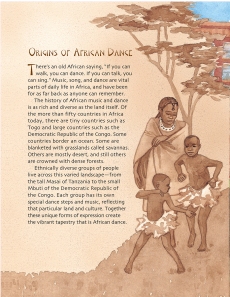
“Origins of African Dance,” excerpt from Drumbeat In Our Feet
2. Introduce the vocabulary
IES: After reading the text and stopping to ask clarifying questions, introduce the target vocabulary words and have students find the words (in their copies). Display a list of the words in the classroom. (P. 24)
3. Teach the vocabulary words in layers
IES: “Teach academic vocabulary in depth using multiple modalities (writing, speaking, listening)” and “teach word-learning strategies to help students independently figure out the meaning of words.” (P. 18-22)
Lee & Low: Over the course of 5-8 days (lesson periods), I would focus on a couple of aspects of each of the new vocabulary words. On a whole class chart where the target words are listed, I would add a new component to each word each day in order to deepen the meaning and foster familiarity with the words for students.
Together we will create a student-friendly definition; write synonyms, antonyms, examples, non-examples; determine parts of speech; draw a picture or create an action/gesture to represent the words; list related word forms and any cognates; break the word down into word parts; and use the word in a meaningful, student-generated sentence.
For example, Monday I would read the excerpt, introduce the target words, find the target words in the text, and come up with a definition for each target word. Tuesday, I would revisit the chart and add synonyms, antonyms, examples, and non-examples for all the vocabulary words to reinforce meaning. Wednesday I would cover part of speech and concrete representations, and so on.
Below is how I would teach my target word, origins, from Drumbeat In Our Feet but I would cover all of the target words each day.
Monday
- student-friendly definition: the source where something starts
Tuesday
- synonyms: beginnings, birthplace, roots, foundation
- antonyms: end, destination, result
- examples: beginning of the universe and life, family backgrounds/heritage, word roots, superhero/comic book origin stories
- non-examples: death of a star, the youngest person in the family tree, the last book in a comic book series
Wednesday
- part of speech: noun
- draw a picture to represent the word: I might draw a lake with a river leading up to a mountain and arrow pointing to where the river starts.
- create an action/gesture to represent the word: with my left hand held out at hip-level as the “lake,” I would point with my right finger to my left shoulder (the mountain) as the origin of the river. [Tip: Students are great at brainstorming concrete representations of words!]
Thursday
- list related word forms: original, originate
- list any cognates: origine (French), origen (Spanish)
Friday
- affixes: none
- use the word in a meaningful, student-generated sentence: We hiked from the lake up to the mountain looking for the origins of the river. The original owner of this house built this house all on her own in 1956.
Remember: This is a process I will repeat each week or every 5-8 lessons with a new text and set of target words. While my students may know only up to 400 new vocabulary words by the end of the year, this repeated process will allow them to tackle new vocabulary words in other content classes and in independent reading.
Next week, we will take a look at how to incorporate the selected vocabulary into activities that support listening, speaking, and writing practice for English Language Learners.
Further reading on supporting English Language Learners in the classroom:
Filed under:
Curriculum Corner Tagged:
CCSS,
close reading,
common core standards,
ELA common core standards,
elementary school,
ELLs,
English Language Learners,
guided reading,
Institute of Education Science,
middle school,
Reading Aloud,
US Department of Education,
vocabulary 


By:
jilleisenberg14,
on 5/10/2014
Blog:
The Open Book
(
Login to Add to MyJacketFlap)
JacketFlap tags:
middle school,
elementary school,
vocabulary,
ell,
reading comprehension,
close reading,
English Language Learners,
common core standards,
CCSS,
Curriculum Corner,
ELA common core standards,
informational nonfiction,
Add a tag
 Jill Eisenberg, our Resident Literacy Expert, began her career teaching English as a Foreign Language to second through sixth graders in Yilan, Taiwan as a Fulbright Fellow. She went on to become a literacy teacher for third grade in San Jose, CA as a Teach for America corps member. She is certified in Project Glad instruction to promote English language acquisition and academic achievement. In her column she offers teaching and literacy tips for educators.
Jill Eisenberg, our Resident Literacy Expert, began her career teaching English as a Foreign Language to second through sixth graders in Yilan, Taiwan as a Fulbright Fellow. She went on to become a literacy teacher for third grade in San Jose, CA as a Teach for America corps member. She is certified in Project Glad instruction to promote English language acquisition and academic achievement. In her column she offers teaching and literacy tips for educators.
As I mentioned last week, the U.S. Department of Education’s Institute of Education Science (IES) and What Works Clearinghouse (WWC) released the latest educator’s guide to present best instructional practices for English Language Learners.
Let’s take a look at the guide’s first recommendation: Teach a set of academic vocabulary words intensively across several days using a variety of instructional activities.
Here is an example of how to apply the first recommendation using IES’s process and Lee & Low Books’ informational nonfiction text, Drumbeat In Our Feet.

Drumbeat In Our Feet
- Choose a text:
IES: “Choose a text that is brief, interesting, and engaging for the students; contains a variety of target academic words to focus on; connects to a given unit of study and builds the students’ knowledge of a topic; provides sufficient detail and examples for students to be able to comprehend the passage; and contains ideas that can be discussed from a variety of perspectives.” (P. 14)
Lee & Low: Based on these criteria, I selected the first chapter, “Origins of African Dance.” The reading level of Drumbeat In Our Feet is best suited for fourth through sixth graders. The topic of dance history is relatable and relevant to this age group. It will spark student interest and engagement and promote discussion. The short excerpt is an appropriate length that can be read within one class period and is worth multiple re-readings over the coming days.
- Select vocabulary:
IES: Select a small number of academic vocabulary words (content-specific and general academic) for multi-day instruction. For in-depth exploration, consider only 5-8 words. The IES suggests choosing words “central to understanding the text, frequently used in the text, might appear in other content areas, with multiple meanings, with affixes, or cross-language potential.” (P. 16-17)
Lee & Low: Based on these criteria, I picked: origins, vital, ethnically, diverse, unique, vibrant and varied from the “Origins of African Dance” excerpt in Drumbeat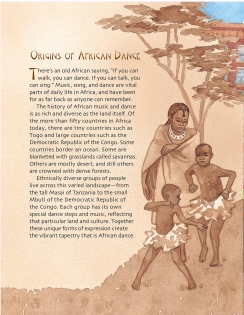 In Our Feet. These words are key to understanding the text, will appear in other content areas students will explore, and several have multiple meanings.
In Our Feet. These words are key to understanding the text, will appear in other content areas students will explore, and several have multiple meanings.
Additionally, I used Flocabulary’s Wordlists to check my words against their grade level recommendations because Flocabulary’s researchers analyze grade level materials and high stakes tests to determine what academic words students should know in each grade. Origins is on the third grade word list and variety (related word form to varied) is on the fourth grade word list. Vital, diversity (related word form to diverse), unique, and vibrant are on the sixth grade word list. However, there are quite a few wordlists available to do this verification so utilize what your district/school recommends or another you have confidence using.
Next week, we will take a look at how to introduce and teach the selected vocabulary across multiple lesson periods using Drumbeat In Our Feet followed by writing and speaking/listening activities for your students to grasp the words’ meanings.
Further reading on supporting English Language Learners in the classroom:
Filed under:
Curriculum Corner Tagged:
CCSS,
close reading,
common core standards,
ELA common core standards,
elementary school,
ell,
English Language Learners,
informational nonfiction,
middle school,
reading comprehension,
vocabulary 


By:
jilleisenberg14,
on 5/3/2014
Blog:
The Open Book
(
Login to Add to MyJacketFlap)
JacketFlap tags:
middle school,
elementary school,
ell,
Educators,
reading comprehension,
common core standards,
CCSS,
Curriculum Corner,
ELA common core standards,
Add a tag
 Jill Eisenberg, our Resident Literacy Expert, began her career teaching English as a Foreign Language to second through sixth graders in Yilan, Taiwan as a Fulbright Fellow. She went on to become a literacy teacher for third grade in San Jose, CA as a Teach for America corps member. She is certified in Project Glad instruction to promote English language acquisition and academic achievement. In her column she offers teaching and literacy tips for educators.
Jill Eisenberg, our Resident Literacy Expert, began her career teaching English as a Foreign Language to second through sixth graders in Yilan, Taiwan as a Fulbright Fellow. She went on to become a literacy teacher for third grade in San Jose, CA as a Teach for America corps member. She is certified in Project Glad instruction to promote English language acquisition and academic achievement. In her column she offers teaching and literacy tips for educators.
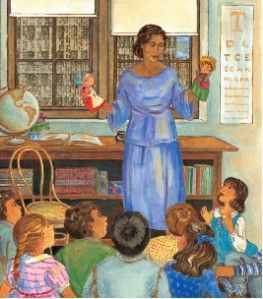
from The Storyteller’s Candle by Lucia Gonzalez
Many of our classrooms include students whose home language is not English. In fact, EngageNY released a report documenting that in 2012-2013 New York State alone taught students who spoke more than 140 languages at home with Spanish making up nearly 65% of all English Language Learners.
Teaching students who are English Language Learners is enormously rewarding and meaningful. However, it at times can feel overwhelming, especially for those who have ever juggled multiple languages at once in the same classroom, supported a student whose language few of their peers or staff spoke, or worked with a student who had little formal school experience beforehand.
The Institute of Education Sciences (IES) released a new practice guide for teaching academic content and literacy to English Learners in elementary and middle school. In this report, IES presents four recommendations to teach and develop English language skills in grades K-8.
Prestwick Café describes why it is critical to give students tools they can apply on their own, like Greek and Latin roots, and points out that even if we teach 10 new words a week all school year long, that is merely 400 vocabulary words—not nearly enough for a student’s journey to become “career and college ready” by high school graduation. While we can not teach every vocabulary word that our students will need or might come across in their reading, we can give them the strategies to build their vocabulary with and without us.
Over the next few weeks, we will focus on the practice guide’s first recommendation—choosing and teaching a set of academic vocabulary words over the course of several days in a variety of instructional activities and what it looks like in action with our books. Using the IES practice guide, we will demonstrate how to choose a text for English Language Learners and significant vocabulary words, to teach selected words, and to incorporate listening, speaking, writing, and reading practice for ELLs in vocabulary instruction.

Quinito, Day and Night / Quinito, día y noche
Additional information, activities and advice for educators and Spanish-speaking families of English Language Learners (ELLs) can be found at ¡Colorín Colorado!
Further reading on supporting English Language Learners in the classroom from The Open Book blog:
Using Dual Language And Bilingual Books And Parent-Volunteers To Foster Deep Thinking
Using Dual Language And Bilingual Books In First And Second Grade
Using Dual Language And Bilingual Books In Third And Fourth Grade
Filed under:
Curriculum Corner Tagged:
CCSS,
common core standards,
Educators,
ELA common core standards,
elementary school,
ell,
middle school,
reading comprehension 


By:
jilleisenberg14,
on 4/19/2014
Blog:
The Open Book
(
Login to Add to MyJacketFlap)
JacketFlap tags:
History,
poetry,
slavery,
Educators,
National Poetry Month,
reading comprehension,
close reading,
African/African American Interest,
common core standards,
CCSS,
Curriculum Corner,
appendix b,
ELA common core standards,
Add a tag
 Jill Eisenberg, our Resident Literacy Expert, began her career teaching English as a Foreign Language to second through sixth graders in Yilan, Taiwan as a Fulbright Fellow. She went on to become a literacy teacher for third grade in San Jose, CA as a Teach for America corps member. She is certified in Project Glad instruction to promote English language acquisition and academic achievement. In her column she offers teaching and literacy tips for educators.
Jill Eisenberg, our Resident Literacy Expert, began her career teaching English as a Foreign Language to second through sixth graders in Yilan, Taiwan as a Fulbright Fellow. She went on to become a literacy teacher for third grade in San Jose, CA as a Teach for America corps member. She is certified in Project Glad instruction to promote English language acquisition and academic achievement. In her column she offers teaching and literacy tips for educators.
1. Teaching Students About Narrator Bias
Etched In Clay is a compelling case study for narrator bias and trustworthiness. The text structure with 13 narrators and its economy of words make Dave’s story captivating, especially to middle grade  students who are beginning to engage with primary sources from the period of American slavery. Students can analyze how each speaker’s social experiences, status, motivations, and values influence his/her point of view, such as evaluating the poems of the slave-owners who would have had a vested interest in popularizing a particular narrative of slavery.
students who are beginning to engage with primary sources from the period of American slavery. Students can analyze how each speaker’s social experiences, status, motivations, and values influence his/her point of view, such as evaluating the poems of the slave-owners who would have had a vested interest in popularizing a particular narrative of slavery.
Using multiple perspectives to tell the story of one life is a striking display of how events can be interpreted and portrayed by different positions in the community. Students face the task of examining the meaning and nuance of each narrator (13 in total!) and what they choose to convey (or don’t).
Discussion questions include:
- Why might the author choose to share Dave’s story using multiple speakers? How do multiple narrations develop or affirm the central idea?
- How do the author’s choices of telling a historical story in present tense and first person narration affect our sympathy toward the narrators and events in the book?
- Select a poem, such as “Nat Turner,” and defend why the author chose a particular narrator to tell that event or moment. How would the event and poem be different if another, like Reuben Drake, had told it?
- Are there narrators the readers can trust more than others? Why or why not? What makes a narrator (un)trustworthy? How is each narrator (un)reliable? Why might one of these narrators not tell readers the “whole” truth? Does having more than one narrator make the story overall more reliable? Why or why not?
- How does a narrator’s position in society or in Dave’s life affect what he/she knows? How does the historical context affect what a narrator may or may not know and his/her reliability? How can readers check a narrator’s knowledge of facts?
- What is the motivation of each narrator to share?
- Does this alternation between narrators build compassion or detachment for Dave in readers? How so?
- Why is it important to learn the history of slavery from slaves themselves?
- Compare and contrast the conditions of slavery from Dave’s point of view and Lewis Miles.
- How do the slaveholders depict the relationships with their slaves? How do the slaves depict their relationships with the slaveholders?
- Compare Dave and Lewis Miles’ perceptions of the Civil War.
- Consider whether Dave and David Drake should be considered one perspective or two.
- Contrast how each narrator feels about antebellum South Carolina.
- Who might be the audience the narrators are telling their version of events to (themselves, God, a news reporter, etc.)? Are they the same? Why is intended audience important to consider?
- Argue whether 13 points of view flesh out this figure or make Dave and his life even more elusive.
2. Poetry Month and Primary Sources
As “Primary Sources + Found Poetry = Celebrate Poetry Month” suggests, the Library of Congress proposes an innovative way to combine poetry and nonfiction. Teaching With The Library of Congress recently re-posted the Found Poetry Primary Source Set that “supports students in honing their reading and historical comprehension skills by creating poetry based upon informational text and images.” Students will study primary source documents, pull words and phrases that show the central idea, and then use those pieces to create their own poems.
This project not only enables teachers to identify whether a student grasps a central idea of a text, but also encourages students to interact with primary sources in much the same way as Etched In Clay’s Andrea Cheng. When researching Dave’s life and drawing inspiration for her verses, Andrea Cheng integrated the small pieces of evidence of Dave’s life, including poems on his pots and the bills of sale.
3. Common Core and the Appendix B Document
Many middle school educators are currently using Henrietta Buckmaster’s “Underground Railroad,” a recommended text exemplar for grades 4-5, and Ann Petry’s Harriet Tubman: Conductor on the Underground Railroad and Frederick Douglass’s Narrative of the Life of Frederick Douglass An American Slave, Written by Himself, recommended text exemplars for grades 6-8 in the Common Core State Standards’ Appendix B document.
Educators can couple Etched In Clay with those texts to involve reluctant or struggling readers, prepare incoming middle school students, and scaffold content and language for English Language Learners. Additionally, Andrea Cheng’s biography offers educators an inquiry-based project for ready and advanced readers to analyze “how two texts address similar themes or topics in order to build knowledge or to compare the approaches the authors take” (CCSS.ELA-LITERACY.CCRA.R.9).
For a more inclusive, diversity-themed collection of contemporary authors and characters of color, check out our Appendix B Diversity Supplement.
Further reading:
Andrea Cheng on Writing Biography in Verse
A Poem from Etched in Clay
Filed under:
Curriculum Corner Tagged:
African/African American Interest,
appendix b,
CCSS,
close reading,
common core standards,
Educators,
ELA common core standards,
History,
National Poetry Month,
poetry,
reading comprehension,
slavery 


By:
jilleisenberg14,
on 4/15/2014
Blog:
The Open Book
(
Login to Add to MyJacketFlap)
JacketFlap tags:
children's books,
diversity,
geography,
Educators,
environmentalism,
classroom projects,
reading comprehension,
close reading,
digital literacy,
visual literacy,
common core standards,
CCSS,
Curriculum Corner,
ELA common core standards,
geoliteracy,
Add a tag
Throughout April, we are exploring how Jan Reynolds’ Vanishing Cultures series can be used in the classroom to teach about the environment, geo-literacy, global citizenship, and nonfiction. Today, we want to share how one school has integrated geo-literacy with digital and visual literacy.
Michael Willis and the Kaleidoscope Team at Williston Central School in Williston, Vermont helped their 3rd and 4th grade classroom build a map on Google Maps of the cultures featured in the books. Through this project, students were able to investigate topics and themes in the Vanishing Cultures series, practice deriving information from other formats and develop visual literacy skills, and gain rich social studies/ geography content knowledge.
The Google Maps assignment is an exciting way to engage reluctant or struggling readers, facilitate the participation of visual learners and English Language Learners, or provide an extension opportunity for ready or advanced learners. The 3rd and 4th grade students hope that in addition to deepening their own knowledge about traditional cultures, their project provides useful and valuable information for others.
From educator, Michael Willis: My 3rd and 4th grade team wanted to get an author in to share their experiences with our young writers. Ideally we wanted a local person and sure enough Jan Reynolds, who lives in Vermont, was available. First we hit up our library as well as the others in our area and got our hands on Jan’s Vanishing Cultures series. We read aloud her books, visited her website, and then Jan came.
She shared a movie about her work and travels with our whole team in the auditorium and then spent time answering questions in smaller groups. It was during one of the small presentations that Jan mentioned how great it would be to use Google Maps to highlight her book locations. I thought it would be a great project for our students, and they were motivated to do it by the idea that the project could be shared with other students who read Jan’s books.
We used Google Maps to plot out where in the world Jan’s Vanishing Cultures books take place, and put together this map.

Williston Central School Google Earth Map for Vanishing Cultures series
Here’s what the students had to say about the project:
What was it like doing the Google Earth Project?
Grace – I thought that it was really fun because we were working with a famous author. We had to get all of her books and look up where she had been using Google Earth.
Isabelle – We dropped pins on the locations using the facts and map information on the inside covers of her books. Doing this project motivated us to have to read her books and learn about the cultures that she visited. It made me appreciate how lucky we are to have the things we have.
Logan – The map project was really interesting. It helped me understand how many different places Jan had been. I didn’t know that there were cultures vanishing from the Earth. It made me want to learn more about the cultures. The books were helpful because she had really been to visit the people, talk to them, and learn how they live.
Addie – We used the summaries and the content from the books to add a brief description to the pins which marked the places. This project motivated us because we wanted to help others learn. It felt special because we were the first ones to do this and actually get published! Plus, I didn’t even know these cultures existed!
Myleigh – The motivating part of the project was that I don’t usually get to explore the world. How often do people get to learn about this kind of thing? It was almost like traveling the world reading Jan’s books.
What do you think is the purpose of Jan’s books? What do they help you realize?
Sean – Her purpose was to teach children about the Vanishing Cultures and what is happening to them. I think Jan’s message was not that they need our help because they have been surviving for a long time. She was telling us that we should respect them, their way of life, and to respect their land. I learned that they are just like everyday people. To them, I bet we would look like the outsiders. Everyone has traditions that they do.
Addie – We are lucky to have so many resources to use.
Grace – It made me realize how different these cultures are from us
Isabelle – It also made me realize that we all are not that different. We may have different stuff and live in different parts of the world, but we all are people.
Grace – We can help other cultures by protecting the regions where they live
Addie – We realized that while our cultures are different, we shouldn’t force them to disappear because we all have something to learn from each other. We could be more conscious of our waste and our pollution and that could help them keep their culture and survive
Isabelle – I think that it is important to respect different cultures because it’s how they live. The Celebrations book helped me learn that different cultures celebrate different holidays
What was it like having Jan visit?
Myleigh – It was really cool to see Jan’s presentation and to hear her describe her trips first hand. It really helped me put myself in her shoes and understand what she was going through. When I was hearing her use such descriptive language it felt like I was right there with her.
Katrina – I think that since she came it really helped us understand that you should appreciate what you have – even though the people in the other cultures don’t have a lot they still seemed happy. The people in those cultures work hard to live off the land and work with nature by using their resources. It really helped me learn about cultures that I didn’t know about.
For more resources on the Vanishing Cultures series, check out:
How are you using the Vanishing Cultures series in your classroom? Share your thoughts, experiences, and strategies that have worked in your school and community! Post a comment below or email Lee & Low at [email protected].
Filed under:
Curriculum Corner Tagged:
CCSS,
children's books,
classroom projects,
close reading,
common core standards,
digital literacy,
diversity,
Educators,
ELA common core standards,
environmentalism,
geography,
geoliteracy,
reading comprehension,
visual literacy 


By:
jilleisenberg14,
on 4/8/2014
Blog:
The Open Book
(
Login to Add to MyJacketFlap)
JacketFlap tags:
children's books,
diversity,
Reading Aloud,
geography,
Educators,
environmentalism,
reading comprehension,
close reading,
Multiracial,
common core standards,
CCSS,
Curriculum Corner,
guided reading,
ELA common core standards,
geoliteracy,
vanishing cultures,
Add a tag
Jill Eisenberg, our Resident Literacy Expert, began her career teaching English as a Foreign Language to second through sixth graders in Yilan, Taiwan as a Fulbright Fellow. She went on to become a literacy teacher for third grade in San Jose, CA as a Teach for America corps member. She is certified in Project Glad instruction to promote English language acquisition and academic achievement. In her column she offers teaching and literacy tips for educators.
Eisenberg, our Resident Literacy Expert, began her career teaching English as a Foreign Language to second through sixth graders in Yilan, Taiwan as a Fulbright Fellow. She went on to become a literacy teacher for third grade in San Jose, CA as a Teach for America corps member. She is certified in Project Glad instruction to promote English language acquisition and academic achievement. In her column she offers teaching and literacy tips for educators.

Vanishing Cultures: Mongolia
Last week on the blog we spotlighted the work of Jan Reynolds, an author and explorer who has written nonfiction for young readers about cultures across the globe. If we had read the Vanishing Cultures series when I was a classroom teacher, my students would have been competing with each other over who knew the most outrageous fact. Did you know the Tiwi, an aboriginal tribe from an island off the coast of Australia, eat mangrove worms fresh? Did you know the Inuit from the Hudson Bay build rock piles that are stacked to look like men in order to scare caribou toward the real Inuit hunters?
My students loved to play the “did you know…” game. That became a popular sentence starter in our classroom. Students would scramble for the latest book or periodical on animals, prehistoric times, and exotic locales. The peregrine falcon, megalodon, and the giant panda were unshakable favorites.
Yet, we don’t want students to know “just facts” as if they are mini-encyclopedias. We aspire for our students to wonder and to investigate how our world works, how we are all connected to our environment and other humans halfway around the globe, and how our actions here affect others way over there.
The Common Core brings a refreshed spotlight to the nonfiction genre in children’s books, challenging publishers, educators, librarians, and parents to present children with high interest, high quality texts. What a time to engage students’ senses, sustain their wonder, and teach them geo-literacy!
National Geographic affirms, “with the rapid pace of change in the 21st century, it is more important than ever that young people understand the world around them.” It has adopted the concept of “geo-literacy,” and even gone so far as to create a community to support and cultivate “geo-educators.”

Vanishing Cultures: Himalaya
Enjoyed in classrooms around the nation, Jan Reynolds’ collection on at-risk traditional cultures is even more significant and striking today than when the series was first published. The persistent popularity of the Vanishing Cultures series speaks to its captivating power to make geo-literacy learning personal and tangible. This collection supports geo-literacy learning because each book challenges students to examine:
- the characteristics of each culture
- what makes this featured culture unique
- how this group of people has adapted to survive in its environment
- what challenges this group of people faces
- the modern human impact (positive and negative) on this traditional culture and the environment
- why the author would want to share this story with children and create a whole series on this topic
When we educate children about other cultures and geo-literacy more broadly, we are implanting the idea that we learn in order to make better, more informed decisions. Before our students become adults in positions of power, we want them to have practice in pausing and thinking how their choices to construct their community could disturb the environment of another community or animal species.
The Vanishing Cultures books encourage students to reason and reflect critically and deeply about how humans affect other humans and why we all benefit from diversity. As classrooms around the country can attest, Jan Reynolds’ books will not only spark enthusiasm that we hope ignites into lifelong careers and hobbies, but also conversation on what information we need to make decisions that will shape our and others’ health, environment, and well-being.

Vanishing Cultures: Down Under
Classroom Ideas for Comparing and Contrasting Between Vanishing Cultures Books and Teaching Geo-Literacy
(Reading Standards, Integration of Knowledge & Ideas, Strand 9)
(Writing Standards, Research to Build & Present Knowledge, Strand 7 and 9)
- How are these cultures similar and different from each other? What actions do these families take in both books to protect their ways of life?
- Compare how the challenges of each culture are similar or different.
- Compare how the children in each book demonstrate their pride in their culture. Why is it important for the children to feel proud of who they are and their way of life?
- What is the author’s purpose in starting each book with the parents telling their child a story from long ago? How does this affect the tone of and set the mood in the series? How does this opening support the central idea?
- After reading two or more of the Vanishing Cultures books, what common features or characteristics does a Vanishing Culture book have? If you were to write a book about your family’s culture, what kinds of things happen in a Vanishing Cultures book? What are some things that will not happen in a Vanishing Cultures book? What central ideas and lessons will be in the book?
- Have students create a chart to compare different aspects of life across two or more cultures. Write the name of each cultural group being compared on the top of the chart, and list the topics for points of comparison down the left side. Here are some possible topics: Food, Clothing, Climate, Geography, Important Animals, Homes, How Children Help (Chores), Roles of Men & Women, Family Life, How People Have Fun, Beliefs, Means of Transportation, Challenges Faced Today, Celebrations, Honoring Loved Ones. Have students record appropriate information as they read and re-read the texts.
- One elementary class created the “Around the World with Jan Reynolds” project on Google Earth. Explore where each of the books takes place. Compare the political map with the satellite map. Reflect on how geography has helped or hurt the survival of these ancient cultures. Students can create their own maps of the different cultures at National Geographic’s MapMaker’s 1-Page Maps.
Filed under:
Curriculum Corner Tagged:
CCSS,
children's books,
close reading,
common core standards,
diversity,
Educators,
ELA common core standards,
environmentalism,
geography,
geoliteracy,
guided reading,
Multiracial,
Reading Aloud,
reading comprehension,
vanishing cultures 


By:
jilleisenberg14,
on 3/29/2014
Blog:
The Open Book
(
Login to Add to MyJacketFlap)
JacketFlap tags:
biographies,
lesson plans,
Educators,
environmentalism,
reading comprehension,
Wangari Maathai,
African/African American Interest,
common core standards,
CCSS,
Curriculum Corner,
ELA common core standards,
ReadyGEN,
children's books,
holidays,
History,
diversity,
Reading Aloud,
Add a tag
 Jill Eisenberg, our Resident Literacy Expert, began her career teaching English as a Foreign Language to second through sixth graders in Yilan, Taiwan as a Fulbright Fellow. She went on to become a literacy teacher for third grade in San Jose, CA as a Teach for America corps member. She is certified in Project Glad instruction to promote English language acquisition and academic achievement. In her column she offers teaching and literacy tips for educators.
Jill Eisenberg, our Resident Literacy Expert, began her career teaching English as a Foreign Language to second through sixth graders in Yilan, Taiwan as a Fulbright Fellow. She went on to become a literacy teacher for third grade in San Jose, CA as a Teach for America corps member. She is certified in Project Glad instruction to promote English language acquisition and academic achievement. In her column she offers teaching and literacy tips for educators.
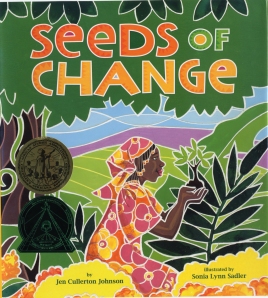
Seeds Of Change
In honor of Wangari Maathai’s birthday on Tuesday, April 1 and upcoming Earth Day later this month, we at Lee & Low Books want to share all the fantastic resources and ideas that are available to educators who are teaching about Wangari Maathai’s legacy and using Seeds Of Change: Planting a Path to Peace.

Seeds Of Change
Elementary School:
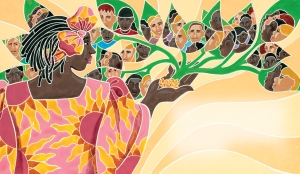 Middle School and High School:
Middle School and High School:
- Seeds Of Change won the American Library Association’s Coretta Scott King/John Steptoe Award for New Talent in Illustration in 2011. The Committee Chair and Book Jury have prepared activities and discussion questions for Seeds Of Change in the 2011 Discussion Guide for Coretta Scott King Book Awards, P. 20-21.
- Have students read and discuss author Jen Cullerton Johnson and illustrator Sonia Lynn Sadler’s joint interview with Lee & Low, which covers the environment, their travels, and Wangari Maathai’s achievements.
- After introducing Wangari Maathai with Seeds Of Change, delve deeper with the Speak Truth To Power human rights education curriculum, a project of the Robert F. Kennedy Center for Justice and Human Rights. They present an in-depth exploration on Wangari Maathai, the Green Belt Movement, and sustainability issues.
- In teaching standard 7 of the ELA Common Core, have students evaluate how Wangari Maathai is presented in a documentary compared to the Seeds Of Change biography. PBS’s documentary on Wangari Maathai and the Green Belt Movement, Taking Root: The Vision of Wangari Maathai, contains a classroom section full of video modules, handouts, and lesson plans.
What did we miss? Let us know how you are using Seeds Of Change in your classroom!
Filed under:
Curriculum Corner Tagged:
African/African American Interest,
biographies,
CCSS,
children's books,
common core standards,
diversity,
Educators,
ELA common core standards,
environmentalism,
History,
holidays,
lesson plans,
Reading Aloud,
reading comprehension,
ReadyGEN,
Wangari Maathai 


By:
jilleisenberg14,
on 3/17/2014
Blog:
The Open Book
(
Login to Add to MyJacketFlap)
JacketFlap tags:
children's books,
History,
biography,
Educators,
white house,
reading comprehension,
close reading,
differentiation,
character analysis,
common core standards,
CCSS,
bloom's taxonomy,
Curriculum Corner,
guided reading,
rigor,
ELA common core standards,
higher level thinking,
Add a tag
 Jill Eisenberg, our Resident Literacy Expert, began her career teaching English as a Foreign Language to second through sixth graders in Yilan, Taiwan as a Fulbright Fellow. She went on to become a literacy teacher for third grade in San Jose, CA as a Teach for America corps member. She is certified in Project Glad instruction to promote English language acquisition and academic achievement. In her column she offers teaching and literacy tips for educators.
Jill Eisenberg, our Resident Literacy Expert, began her career teaching English as a Foreign Language to second through sixth graders in Yilan, Taiwan as a Fulbright Fellow. She went on to become a literacy teacher for third grade in San Jose, CA as a Teach for America corps member. She is certified in Project Glad instruction to promote English language acquisition and academic achievement. In her column she offers teaching and literacy tips for educators.
First Lady Michelle Obama travels to China this week from March 19-26 and will be focusing on the power and importance of education. In an open letter to American students, the First Lady writes, “During my trip, I’ll be visiting a university and two high schools in Beijing and Chengdu (which are two of China’s largest cities). I’ll be talking with students about their lives in China and telling them about America and the values and traditions we hold dear. I’ll be focusing in particular on the power and importance of education, both in my own life and in the lives of young people in both of our countries.”
We at Lee & Low Books wish we could join the First Lady, but since we can’t this time around, we will be reading the biography of one of China’s greatest statesmen, poets, and humanitarians, Su Dongpo. This scholar is a shining example of how persistence and dedication to one’s studies lead to achievement beyond the classroom and enable one to affect meaningful change.

Su Dongpo, Chinese Genius
This biography presents a rich setting for Standard 3 of the Common Core State Standards: character analysis. We follow Bloom’s Taxonomy to illustrate the range of questions you can use to meet your students’ needs and access their literary strengths. By creating a progression of questions within one standard, we differentiate for students within a class, provide extension opportunities for ready learners, or move the whole class from literal- to higher-level thinking over the course of several readings.
Knowledge:
- What are Su Dongpo’s appearance/physical attributes, deeds/actions, thoughts/dialogue, and feelings/emotions?
- What are other character’s opinions of and reactions to Su Dongpo?
- Can you select sections showing how Su Dongpo relates to other characters?
- How would you describe Su Dongpo in a paragraph?
Comprehension:
- How would you classify Su Dongpo’s character trait(s) based on these actions, thoughts, and feelings above?
- How would you summarize Su Dongpo’s opinion or feelings about Wang Anshi?
- How would you describe Su Dongpo’s feelings about being banished from his job and home?
- What problems does Su Dongpo face and how does he solve them?
- How would you summarize Su Dongpo’s opinion about the purpose of government?
Application:
- When Su Dongpo was twenty, he took the official exams and earned status as the First Scholar for his academic achievements. Based on what you know about Su Dongpo’s character traits, how would he have handled the situation differently if he had not earned such high marks the first time?
- How would Su Dongpo react if his brother, Su Ziyou, became a corrupt government official?
- What would need to happen or change for Su Dongpo to work for Emperor Zhezong?
- How would Su Dongpo distinguish a “good” government from a “bad” government?
- What would Su Dongpo likely think about our end of the year state assessments or the Common Core State Standards?
- What advice do you think Su Dongpo would have for students who take state and national tests today?
- If Su Dongpo worked for the U.S. Department of Education, what might Su Dongpo feel and think about the role of education in America today?
Analysis:
- How did Su Dongpo’s upbringing prepare him for his career in government?
- What inspired Su Dongpo’s beliefs about the purpose of government?
- Why did Su Dongpo not care about “instant glory” or “worldly fame” when making a decision?
- Compare Su Dongpo and Wang Anshi’s motivations for working in the government.
Synthesis:
- Compose and present a speech that will communicate the thoughts and feelings of Su Dongpo to the Chinese people after he is pardoned when Emperor Zhezong dies.
- Imagine you are Su Dongpo and write a diary account of your daily thoughts and activities. What would you say about the work that you do, the people you meet in government and in the villages, and the challenges you face?
- Rewrite the scene of Su Dongpo hearing he is pardoned after the death of Emperor Zhezong. What would Su Dongpo feel and what would the Chinese people think about him if he were not pardoned?
Evaluation:
- Defend whether you would or would not like Su Dongpo to work in your government.
- Argue what lessons Su Dongpo learned from his career in and out of government.
- How effective is Su Dongpo as a humanitarian?
- Determine whether Su Dongpo was or was not disrespectful of government.
- Assess whether Su Dongpo changed from the beginning to the end of the book based on his character traits.
Additional resources:
Sign up for updates from the First Lady throughout her trips and opportunities to ask questions.
Explore PBS LearningMedia for the First Lady’s blog, a map of China, and other resources.
Filed under:
Curriculum Corner Tagged:
biography,
bloom's taxonomy,
CCSS,
character analysis,
children's books,
close reading,
common core standards,
differentiation,
Educators,
ELA common core standards,
guided reading,
higher level thinking,
History,
reading comprehension,
rigor,
white house 


By:
jilleisenberg14,
on 2/26/2014
Blog:
The Open Book
(
Login to Add to MyJacketFlap)
JacketFlap tags:
History,
diversity,
Oscars,
Educators,
reading comprehension,
infographics,
Academy Awards,
Race issues,
common core standards,
CCSS,
visual literacy,
teaching about race,
Curriculum Corner,
ELA common core standards,
Add a tag
 Jill Eisenberg, our Resident Literacy Expert, began her career teaching English as a Foreign Language to second through sixth graders in Yilan, Taiwan as a Fulbright Fellow. She went on to become a literacy teacher for third grade in San Jose, CA as a Teach for America corps member. She is certified in Project Glad instruction to promote English language acquisition and academic achievement. In her column she offers teaching and literacy tips for educators.
Jill Eisenberg, our Resident Literacy Expert, began her career teaching English as a Foreign Language to second through sixth graders in Yilan, Taiwan as a Fulbright Fellow. She went on to become a literacy teacher for third grade in San Jose, CA as a Teach for America corps member. She is certified in Project Glad instruction to promote English language acquisition and academic achievement. In her column she offers teaching and literacy tips for educators.
Infographics’ format and economy of words make infographics engaging and accessible to children, reluctant readers, visual learners, and English Language Learners. As infographics contain multiple layers of information, they are a challenging medium for students to practice inferences and interpretation. Lee & Low Books’ infographic series on the diversity gap in major spheres of influence is a valuable vehicle to build students’ visual literacy skills and understanding of diversity. The following discussion questions and suggested activities were created based on the Diversity Gap in the Academy Awards infographic, but these can be applied to the rest of the series.
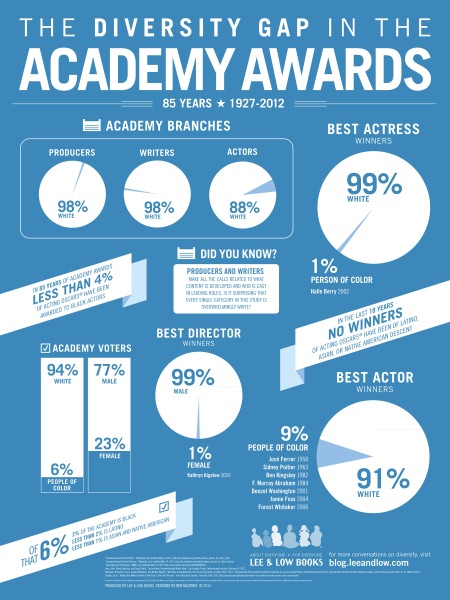
Infographic: The Diversity Gap in the Academy Awards (click to enlarge)
Discussion questions to consider with your students:
- What patterns do you see? What trends do you see? How are the different charts related?
- What is the central idea of this infographic? How do the words, phrases, and visuals interact to affirm the central idea?
- Based on the infographic, what does “diversity gap” mean in terms of the Academy Awards?
- What might the author’s purpose be in choosing this medium to convey the central idea (to shame, inspire, shock, etc.)?
- Does the infographic make the central idea clear and obvious? How does the infographic use an economy of words, language, typography, pie charts, bar graphs, negative space, and title to communicate the central idea?
- What type of infographic is this (flow chart, web, map, graph, diagram, table, timeline)? What might the author’s purpose be in choosing this type of infographic? How effective is this format of infographic at organizing and displaying data compared to just text?
- Evaluate the effectiveness of the infographic as a form of communication as compared to text alone. Is this the most effective and convincing way to convey information about a lack of diversity at the Academy Awards? Why or why not?
- Why might the creators have assembled this information about the Academy Awards and race at all?
- Who is the intended audience (moviegoers, actors, directors, writers, producers, movie studios, general public, government officials)? What might the creators of this infographic want them to do with this information?
- What is the context of this infographic? What major events in the United States were taking place when this infographic was created? Why is it important to understand the context of the infographic?
- Is this infographic’s argument and presentation persuasive or compelling? Why or why not? Analyze this infographic’s effectiveness in inspiring activism.
- Based on the information presented, what can you predict future trends will be for award winners, actors, directors, producers, and writers?
- Can you determine causes for the lack of diversity in this infographic? Why or why not? How might researchers go about figuring out the cause(s) for the historical and current lack of diversity in the Academy Awards?
- What is the impact of a lack of diversity amongst writers, actors, producers, directors, and award winners? What does it mean to be a young child growing up and consuming this form of media (movies)? What will they see? What will they not see? Tell me more about the possible effects of this situation and current trends.
Suggested activities:
- Challenge students to translate this infographic’s central idea into a written argument. Students should use key details and evidence from the infographic to assert the central idea.
- Have students revise or add on to make the infographic more effective. Students should consider format, adding or deleting information, and more. What would make the infographic stronger, more persuasive, or more memorable?
- Encourage students to investigate how these percentages compare to the general public. Students can use the United States Census data for demographics.
- Have students investigate possible causes for the lack of diversity in the Academy Awards. Urge students to propose ways to change these trends.
- If possible, ask students to research the percent of moviegoers who are people of color. Check industry publications or major news periodicals. How do these numbers compare to the information in the infographic?
- Permit students to interview their grade, class, or school on questions, including: Do you go to the movies? How often? What kinds of movies do you see? Who are your favorite actor and actress in Hollywood today? Who is a director/actor/actress of color that you have seen in a movie recently? Why do you think there aren’t more movies by and with people of color? Students can organize and display data in graphs and present findings to the class. Reflect on this information’s relationship to the infographic’s central idea.
- Dig deeper—investigate the artists that were nominated each year. How many were people of color over those 85 years? What roles did these artists play in the movies they were nominated for? What genres of movies were they in for this nomination? Explore the people of color who did win best actress or best actor. What roles did they play and what kind of movies were they in when they won for best acting?
- Compare this to other Lee & Low Books’ infographics in the series: The Tony Awards, The Emmy Awards, Children’s Book Publishing, The NY Times Top 10 Bestsellers List, and American Politics. Consider central idea, evidence, format, and audience.
- Update the information to include the 2013 and 2014 Academy Awards results. What changed? What did not change?
For further reading on teaching visual literacy and diversity in the classroom, check out these fantastic resources:
How are you building visual literacy skills in the classroom? Let us know below!
Filed under:
Curriculum Corner Tagged:
Academy Awards,
CCSS,
common core standards,
diversity,
Educators,
ELA common core standards,
History,
infographics,
Oscars,
Race issues,
reading comprehension,
teaching about race,
visual literacy 


 Katherine Ali is a dual-certified elementary and special education teacher. She recently graduated as a literacy specialist with a Masters in Science from Manhattanville College. She has experience teaching internationally in northern China and now teaches in the Bronx, NY.
Katherine Ali is a dual-certified elementary and special education teacher. She recently graduated as a literacy specialist with a Masters in Science from Manhattanville College. She has experience teaching internationally in northern China and now teaches in the Bronx, NY.
In order to be active participants in the literate world, students must be reading, writing, speaking, and listening at all ages. The natural interplay of language looks slightly differently across grades levels, but the foundations and mission are the same:
Reading: Text Complexity and the growth of comprehension
We want our students to ascend the staircase of text complexity and simultaneously sharpen their comprehension skills. Students, of all ages, need to build stamina through independently reading more rigorous and complex texts. Additionally, read-alouds allow students to access content and concepts they may not be able to decode themselves.
Writing: Text types, responding to reading, and research
Opinion pieces, research-based projects, and narratives are the three main categories of student writing the Common Core State Standards focus on. It is also imperative that our students engage in the writing process and expand their writing style using the conventions of the English language.
Speaking & Listening: Flexible Communication and Collaboration
Speaking and Listening in each grade level includes but is certainly not limited to presentations, group work, and class discussion. Students need to be aware of their oral language skills and communicate their thoughts and research appropriately. Building off other students’ ideas is also an important component in developing these skills.
In this series, I’ve looked at:
Integrating reading, writing, speaking, and listening in grades K-1
Integrating reading, writing, speaking, and listening in grades 2-3
Today I look at how to integrate reading, writing, speaking and listening standards in grades 4-5, using the book Bird as an example.
 Bird, by Zetta Elliott, illus. by Shadra Strickland
Bird, by Zetta Elliott, illus. by Shadra Strickland
Interest Level: Gr. 3-8
DRA: 40, Guided Reading Level: Q
Reading: Due to some heavy content (drug use and addiction, death) this story must be used in a safe learning environment. It allows for great discussion around the themes of death, decision-making, perseverance, and coping skills. Reading this book closely with a small group of students – almost page by page – will allow the students to deeply recognize the narrator’s point of view and how it affects the story. Character description and point of view are the two main reading strategies I would suggest teaching with this intense, powerful text.
Writing: Quick writes about students’ reactions and connections to the story are still merited in fourth and fifth grade. Higher-level thinking questions can also be posed for students to develop their inferential thinking skills as well as their ability to cite evidence to support their answer. Questions can include, “How are birds important in this text?” “What happened to Marcus? How do you know? What in the story tells you this?” and “How do you feel about the ending? Why?“ Using a high-interest and provocative book such as Bird may elicit a higher level of student participation.
Speaking & Listening: To engage the students immediately, introduce this story by showing the Book Trailer posted on the Lee and Low website. After students read and listen to the trailer, have them turn and talk with a partner to make predictions. Or you can pose the question, “How does this trailer make you want to read the book Bird?” and give students 5 – 10 minutes for a quick write and share. Then, discuss the media medium of the trailer asking, “Whose perspective is the story being told from? How do you know? What decisions did the editor have to make? How do the music and transitions affect the presentation?” The S&L standards for these grades want the students to converse about multimedia and presentation decisions.
There is also an extensive free teacher’s guide available to go with Bird, with several additional ideas.
Notice the close relationship between the modes of communication as the students read, listen to, write, and speak about complex, grade-appropriate texts. If these key features are central to your instruction, your students will leave with a toolbox of skills they can rely on forever.
Filed under:
Curriculum Corner Tagged:
Bird,
CCSS,
common core standards,
ELA common core standards,
listening and speaking standards,
Reading Standards,
writing standards 


By:
Hannah,
on 9/16/2013
Blog:
The Open Book
(
Login to Add to MyJacketFlap)
JacketFlap tags:
common core standards,
CCSS,
Curriculum Corner,
ELA common core standards,
listening and speaking standards,
Reading Standards,
writing standards,
reading,
Civil Rights,
guest blogger,
integration,
close reading,
Add a tag

 Katherine Ali is a dual-certified elementary and special education teacher. She recently graduated as a literacy specialist with a Masters in Science from Manhattanville College. She has experience teaching internationally in northern China and now teaches in the Bronx, NY.
Katherine Ali is a dual-certified elementary and special education teacher. She recently graduated as a literacy specialist with a Masters in Science from Manhattanville College. She has experience teaching internationally in northern China and now teaches in the Bronx, NY.
In order to be active participants in the literate world, students must be reading, writing, speaking, and listening at all ages. The natural interplay of language looks slightly differently across grades levels, but the foundations and mission are the same:
Reading: Text Complexity and the growth of comprehension
We want our students to ascend the staircase of text complexity and simultaneously sharpen their comprehension skills. Students, of all ages, need to build stamina through independently reading more rigorous and complex texts. Additionally, read-alouds allow students to access content and concepts they may not be able to decode themselves.
Writing: Text types, responding to reading, and research
Opinion pieces, research-based projects, and narratives are the three main categories of student writing the Common Core State Standards focus on. It is also imperative that our students engage in the writing process and expand their writing style using the conventions of the English language.
Speaking & Listening: Flexible Communication and Collaboration
Speaking and Listening in each grade level includes but is certainly not limited to presentations, group work, and class discussion. Students need to be aware of their oral language skills and communicate their thoughts and research appropriately. Building off other students’ ideas is also an important component in developing these skills.
Last week, I explained what what it looks like to integrate reading, writing, speaking, and listening in grades K-1, using the book Rainbow Stew as an example. This week, I take a look at grades 2-3:
 As Fast As Words Could Fly by Pamela M. Tuck, illus. by Eric Valesquez
As Fast As Words Could Fly by Pamela M. Tuck, illus. by Eric Valesquez
Interest Level: 2 -7
DRA: 34, Guided Reading Level: O
Reading: Doing a close read with students of As Fast As Words Could Fly fulfills the Common Core’s shift up the staircase of text complexity and builds strong vocabulary skills. Words such as refused, boasted, disbelief, barricaded, grimaces, and blurted are rich and valuable for second and third graders to read and understand. This text is also an excellent model of the use of dialogue. Through close reading activities students can highlight the dialogue and the speaker to understand the different ways to properly punctuate dialogue in a narrative. Of course, teachers can also read this story aloud so students can connect to the themes of perseverance and overcoming adversity.
Writing: Tuck’s writing style is strong and complex. She uses compound sentences, prepositions, and onomatopoeia throughout the story creating a very sophisticated narrative. Teachers can focus on one of these skills in a Writing Workshop model in which students translate the skill into their own writing. Mason’s story also evokes different opinions and feelings that lead to rich discussion. Use these discussion questions as a guide and encourage students to write a Reader’s Response and to share their responses 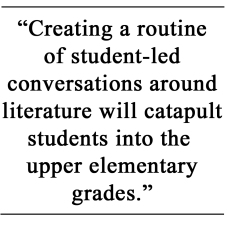 with the class.
with the class.
Speaking & Listening: By second and third grade, students should be developing their formal presentation skills, therefore they may share Mason’s story through a presentation about influential people who took risks (complement the study with this interview with Moses Teel Jr., whose experience as a teenager during integration was the basis for Mason’s story).
Students also need to learn to lead discussions. Assign a group of students to be the leaders of an interactive read-aloud and have them come prepared with various questions they developed in advance with the classroom teacher. Creating a routine of student-led conversations around literature will catapult students into the upper elementary grades.
Stay tuned next week, when I discuss how to integrate reading, writing, speaking, and listening standards for grades 4-5 using Bird.
Filed under:
Curriculum Corner,
guest blogger Tagged:
CCSS,
Civil Rights,
close reading,
common core standards,
ELA common core standards,
integration,
listening and speaking standards,
reading,
Reading Standards,
writing standards 


By:
Hannah,
on 9/9/2013
Blog:
The Open Book
(
Login to Add to MyJacketFlap)
JacketFlap tags:
common core standards,
CCSS,
Curriculum Corner,
ELA common core standards,
listening and speaking standards,
Rainbow Stew,
Reading Standards,
writing standards,
literacy,
guest blogger,
kindergarten,
reading comprehension,
close reading,
Add a tag

 Katherine Ali is a dual-certified elementary and special education teacher. She recently graduated as a literacy specialist with a Masters in Science from Manhattanville College. She has experience teaching internationally in northern China and now teaches in the Bronx, NY.
Katherine Ali is a dual-certified elementary and special education teacher. She recently graduated as a literacy specialist with a Masters in Science from Manhattanville College. She has experience teaching internationally in northern China and now teaches in the Bronx, NY.
As educators, we witness the transformations of students throughout elementary school. First graders will one day become fifth graders, while fifth graders were once first graders. So we must think, where did our students come from? and where are they going next? Our classroom must be structured to prepare our students for the future and help them build a skillset they can bring with them. In order to be active participants in the literate world, students must be reading, writing, speaking, and listening at all ages.
Here on the LEE & LOW blog, I’ll illustrate what it looks like to integrate reading, writing, speaking, and listening across several grade levels: K-1, 2-3, and 4-5. The natural interplay of language looks slightly different across grade levels, but the foundations and mission are the same.
Reading: Text Complexity and the growth of comprehension
We want our students to ascend the staircase of text complexity and simultaneously sharpen their comprehension skills. Students of all ages need to build stamina through independently reading more rigorous and complex texts. Additionally, read-alouds allow students to access content and concepts they may not be able to decode themselves.
Writing: Text types, responding to reading, and research
The three main categories of student writing the standards focus on are opinion pieces, research-based projects, and narratives. It is also imperative that our students engage in the writing process and expand their writing style using the conventions of the English language.
Speaking and Listening: Flexible Communication and Collaboration
Speaking and Listening in each grade level includes (but is certainly not limited to) presentations, group work, and class discussion. Students need to be aware of their oral language skills and communicate their thoughts and research appropriately. Building off other students’ ideas is also an important component in developing these skills.
Over the next few weeks, I’ll share a few titles published by LEE & LOW BOOKS that illustrate opportunities for integrating oral and written language in the classroom. The stories can be used in different capacities depending on students’ interest and ability; therefore I focus on the interest level as well as the guided reading level to determine each book’s grade-level appropriateness. Furthermore, while the mini-lesson ideas and strategy-based activities are categorized by each key feature, they are still connected.
Grades K-1
Rainbow Stew by Cathryn Falwell
Interest Level: Grades K -3
DRA: 16, Guided Reading: I
Reading: The rhythm and rhyming of Rainbow Stew (“Whimper, sigh, cloudy sky, is it to wet to play? We don’t want to stay inside/ because of rain today“) make it a fantastic read aloud. Teachers can model how to use the bright, colorful pictures and other context clues to unlock the meaning of unfamiliar words such as “soggy” and “grasshopper.”
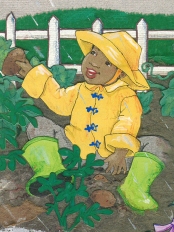
image from Rainbow Stew
Students can also practice reading together through choral reading exercises in either whole class or small group instruction. Choral reading supports struggling readers and strengthens fluency. Students are also then listening to the rhythm and rhyming of the author’s words repeatedly. Additionally, students may be able to read this story independently to practice fluency and build vocabulary. For emergent readers, this text can be a tool to teach phonemic awareness and word patterns as well.
Writing: Author Cathryn Falwell uses a methodical writing style of action words followed by rhyming verses. Young learners can discuss the writer’s craft in this picture book as well as notice some nuances in the different verses with strong scaffolding. Teachers can lead a shared writing project in which the class borrows Falwell’s style and writes their own book, playing with words. Another age-appropriate reading and writing strategy presented in Rainbow Stew is sequencing. Students will need to refer to the story in order to recount the events by either drawing pictures or writing.
Speaking & Listening: Teachers can facilitate an interactive read-aloud in which students turn and talk to one another about the story. Asking questions such as, “What other stories does Rainbow Stew remind you of?” adheres to the reading standards in making connections across different texts and fosters intentional discussions. Through the choral reading exercise students are reading, speaking, and listening to the text. Creating a class book improves collaboration skills such as taking turns, listening to other’s ideas, and compromising.
Stay tuned next week as I demonstrate how to integrate reading, writing, speaking & listening for grades 2-3 using As Fast As Words Can Fly by Pamela Tuck!
Further Reading:
Integrating Reading, Writing, Speaking, and Listening in the Classroom
What Does Close Reading Look Like in Kindergarten?
Filed under:
Curriculum Corner,
guest blogger Tagged:
CCSS,
close reading,
common core standards,
ELA common core standards,
kindergarten,
listening and speaking standards,
literacy,
Rainbow Stew,
reading comprehension,
Reading Standards,
writing standards 


By:
Jaclyn DeForge,
on 3/18/2013
Blog:
The Open Book
(
Login to Add to MyJacketFlap)
JacketFlap tags:
common core standards,
Curriculum Corner,
common core text sets,
text sets,
compiling rigorous text sets,
thematic text sets,
Book Lists,
Resources,
Reading Aloud,
close reading,
Add a tag
 Jaclyn DeForge, our Resident Literacy Expert, began her career teaching first and second grade in the South Bronx, and went on to become a literacy coach and earn her Masters of Science in Teaching. In her column she offers teaching and literacy tips for educators. This is the second in a series of posts on thematic text sets.
Jaclyn DeForge, our Resident Literacy Expert, began her career teaching first and second grade in the South Bronx, and went on to become a literacy coach and earn her Masters of Science in Teaching. In her column she offers teaching and literacy tips for educators. This is the second in a series of posts on thematic text sets.
One aspect of the Common Core that I get asked questions about all the time is thematic text sets. What are they? How do you know which books to use? What types of texts should you be pairing together?
Fear not! I’ve compiled some examples of text sets that cover one topic and span multiple genres and reading levels. Some of the titles you may already have in your classroom library, and others I think you’ll enjoy discovering. In my first post, I compiled books about the moon. Today we look at books about Kenya:
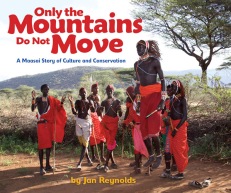
Theme/topic: Kenya
Grade: 3rd-4th
Informational Text: Only the Mountains Do Not Move by Jan Reynolds (Guided or Shared Reading)
- provides information about the Maasai people of Kenya
- can be used to address informational text standards
(a free Teacher’s Guide is available for this title)
Realistic Fiction: First Come the Zebra by Lynne Barasch (Independent Reading)
- the main characters in the story are from the Kikuyu and Maasai tribes
- can be used to address literature standards
(a free Teacher’s Guide is available for this title)
Narrative Nonfiction: Brothers in Hope: The Story of the Lost Boys of Sudan by Mary Williams (Read Aloud)
- the story chronicles the Lost Boys’ journey from southern Sudan to Kenya
- can be used to address informational text and literature standards
(a free Teacher’s Guide is available for this title)
Biography: Seeds of Change: Planting a Path to Peace by Jen Cullerton Johnson (Read Aloud)
- discusses the life and contributions of Nobel Peace Prize winner Wangari Maathai
- can be used to address informational text and literature standards
(a free Teacher’s Guide is available for this title)
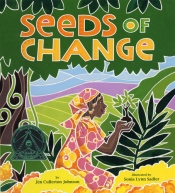
What books would you put on this list? Add your favorites in the comments!
Further Reading: Thematic Text Set: The Moon (2nd grade)
Filed under:
Curriculum Corner,
Resources Tagged:
Book Lists,
close reading,
common core standards,
common core text sets,
compiling rigorous text sets,
Reading Aloud,
text sets,
thematic text sets 


By:
Jaclyn DeForge,
on 3/4/2013
Blog:
The Open Book
(
Login to Add to MyJacketFlap)
JacketFlap tags:
fiction,
Book Lists,
Resources,
Reading Aloud,
Jane Yolen,
Read Aloud,
realistic fiction,
Nonfiction poetry,
independent reading,
Caroline Hatton,
reading comprehension,
literacy tips,
Marilyn Singer,
shared reading,
Gail Gibbons,
common core standards,
Owl Moon,
Curriculum Corner,
A Full Moon is Rising,
guided reading,
informational text,
common core text sets,
Surprise Moon,
text sets,
The Moon Book,
Add a tag
 Jaclyn DeForge, our Resident Literacy Expert, began her career teaching first and second grade in the South Bronx, and went on to become a literacy coach and earn her Masters of Science in Teaching. In her column she offers teaching and literacy tips for educators.
Jaclyn DeForge, our Resident Literacy Expert, began her career teaching first and second grade in the South Bronx, and went on to become a literacy coach and earn her Masters of Science in Teaching. In her column she offers teaching and literacy tips for educators.
One aspect of the Common Core that I get asked questions about all the time is thematic text sets. What are they? How do you know which books to use? What types of texts should you be pairing together?
Fear not! I’ve compiled some examples of text sets that cover one topic and span multiple genres and reading levels and over the next few weeks, I’ll be sharing these sets with you. Some of the titles you may already have in your classroom library, and others I think you’ll enjoy discovering.

Theme/topic: The Moon
Grade: 2nd
Informational Text: The Moon Book by Gail Gibbons (Shared Reading)
- provides scientific information about the moon
- can be used to address informational text standards
Nonfiction Poetry: A Full Moon is Rising by Marilyn Singer (Read Aloud)
- provides scientific information about the moon
- provides information regarding moon-related festivals, traditions, holidays, and celebrations
- can be used to address informational text and literature standards
Realistic Fiction: Owl Moon by Jane Yolen (Guided Reading)
- the moon plays a central role in the setting of the story
- can be used to address literature standards
Realistic Fiction: Surprise Moon by Caroline Hatton (Independent Reading)
- discusses celebrations and festivals related to the moon
- can be used to address literature standards

from A Full Moon is Rising
What books would you put on this list? Add your favorites in the comments!
Filed under:
Curriculum Corner,
Resources Tagged:
A Full Moon is Rising,
Book Lists,
Caroline Hatton,
common core standards,
common core text sets,
fiction,
Gail Gibbons,
guided reading,
independent reading,
informational text,
Jane Yolen,
literacy tips,
Marilyn Singer,
Nonfiction poetry,
Owl Moon,
Read Aloud,
Reading Aloud,
reading comprehension,
realistic fiction,
shared reading,
Surprise Moon,
text sets,
The Moon Book 


By:
Jaclyn DeForge,
on 2/11/2013
Blog:
The Open Book
(
Login to Add to MyJacketFlap)
JacketFlap tags:
Resources,
Reading Aloud,
multicultural books,
Read Alouds,
Educators,
independent reading,
reading comprehension,
common core standards,
Curriculum Corner,
guided reading,
appendix b,
common core standards appendix b,
common core standards ela appendix b,
common core standards language arts appendix b,
exemplar texts appendix B,
smiling dogs,
diversity,
Book Lists,
Add a tag
 Jaclyn DeForge, our Resident Literacy Expert, began her career teaching first and second grade in the South Bronx, and went on to become a literacy coach and earn her Masters of Science in Teaching. In her column she offers teaching and literacy tips for educators.
Jaclyn DeForge, our Resident Literacy Expert, began her career teaching first and second grade in the South Bronx, and went on to become a literacy coach and earn her Masters of Science in Teaching. In her column she offers teaching and literacy tips for educators.
Earlier this week, I had the pleasure of meeting with a literacy expert who was SUPER involved with the creation of the Common Core Standards (!!!!!), and she gave me some important feedback about the Appendix B supplement I posted last week. To refresh your memory, what we’ve done is compiled a supplement to Appendix B that includes both contemporary literature and authors/characters of color, and that also meets the criteria (complexity, quality, range) used by the authors of the Common Core. We were lucky enough to have this literacy expert take a look at our supplement, and she gave some great suggestions:
- The texts selected for Read Aloud can be outside the text complexity bands for each grade cluster.
- Texts that are Read Aloud in lower grades can be read as Independent Reading in upper grades.
We’ve incorporated these ideas into our Appendix B supplement. So, without further ado, click here for a PDF of our new and improved multicultural supplement to the Common Core’s Appendix B.
Know who else is excited about the updated Appendix B list? This guy:
Further Reading:
What’s in your classroom? Rethinking Common Core recommended texts
Why Window and Mirror Books are Important for All Readers
Filed under:
Curriculum Corner,
Resources Tagged:
appendix b,
Book Lists,
common core standards,
common core standards appendix b,
common core standards ela appendix b,
common core standards language arts appendix b,
diversity,
Educators,
exemplar texts appendix B,
guided reading,
independent reading,
multicultural books,
Read Alouds,
Reading Aloud,
reading comprehension,
smiling dogs 


By:
Amanda,
on 2/4/2013
Blog:
The Open Book
(
Login to Add to MyJacketFlap)
JacketFlap tags:
diversity,
Book Lists,
Resources,
guest blogger,
Educators,
Power of Words,
Race issues,
common core standards,
Curriculum Corner,
windows and mirrors,
Add a tag
 Guest blogger Katie Cunningham is an Assistant Professor at Manhattanville College. Her teaching and scholarship centers around children’s literature, critical literacy, and supporting teachers to make their classrooms joyful and purposeful. Katie has presented at numerous national conferences and is the editor of The Language and Literacy Spectrum, New York Reading Association’s literacy journal.
Guest blogger Katie Cunningham is an Assistant Professor at Manhattanville College. Her teaching and scholarship centers around children’s literature, critical literacy, and supporting teachers to make their classrooms joyful and purposeful. Katie has presented at numerous national conferences and is the editor of The Language and Literacy Spectrum, New York Reading Association’s literacy journal.
When we lived in Brooklyn, I knew my sons were growing up in a diverse community. They understood that people have different skin colors. That people speak different languages. That people eat different foods. That people believe different things. That we all share a common humanity. That life is full of complexity.
Now we live in the woods and appreciate the quiet of country living but this is far from a diverse community. For my boys, there is greater diversity in the pages of a book than on the streets of their town. Multicultural children’s literature is a doorway into greater understanding that their cultural background is not the only cultural background. That their way of speaking is not the only way of speaking. That their point of view is not shared by everyone.
When we open a book and start to read a story, we use our imaginations to walk through whatever world the author has created. Children’s literature is full of stories about boys and girls that look like my children. Rudine Sims Bishop uses the terms mirror books and window books to describe how we both see ourselves and see others when we read literature. The characters my sons encounter are often mirrors and they find their life experiences reflected in the books they read. Children from dominant social groups have always found their mirrors in books, but do they have enough access to high-quality stories that represent other cultural backgrounds in a positive way?

artwork by Chris Soentpiet from Amazing Faces
My sons need more than mirror books. As I scan our reading shelves at home I know we can do better. When I walk into many classrooms, I know they too can do better. My sons and all children need books that provide windows into other life experiences to understand the diverse world we live in and to build connections to all other humans. After all, when the lighting is just right can’t a window become a mirror?
My friend, colleague, and global literacy leader Pam Allyn takes Charlotte’s Web with her when she travels to Lit Clubs in Kenya, Haiti, and South Korea. She takes Charlotte’s Web because even though the children she meets do not look like or speak like Fern, there is a shared humanity in E. B. White’s words that is unparalleled, and all children can find a mirror in Fern’s courageous spirit. Pam has created Lit Clubs and Lit Camps through her organization LitWorld that emphasize the human strengths found in stories. Imagine if all the stories we read with children were framed around human strengths? What strengths would you choose?
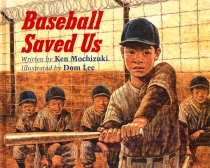
Of course, stories also help us understand that the world we live in is not what it should be. Stories can help young children understand that racism very much exists in this country, and that power is unequally distributed based on race, class, and gender. For children from dominant groups, window moments in stories come when the children realize they hold a powerful place in society and that there is something unjust about this. Two stories that center on human strength and offer powerful mirror/window possibilities for children are Baseball Saved Us by Ken Mochizuki and Seeds of Change: Planting a Path to Peace by Jen Cullerton Johnson. Baseball Saved Us is about an underdog believing in himself and the strength that comes from confidence, but it also tells about an ugly chapter in United States history when Japanese Americans were sent to internment camps during World War II. Seeds of Change is a story of perseverance in the face of political opposition and bias against women. It is also about respecting nature and the power of collective action to change a landscape and the sustainability of a nation. There are many more such stories. Yet, are we reading them to children at home and in our classrooms?
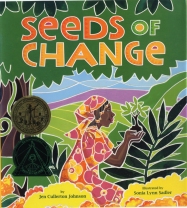
President Obama in his Second Inaugural Address emphasized the legacy of Dr. Martin Luther King Jr. when he said, “our individual freedom is inextricably bound to the freedom of every soul on Earth.” Stories can help children realize this. Isn’t a sense of social justice something we want all children to develop? Through the thoughtful selection of books we read to our children we take a step toward creating adults who desire a world that is better than the one we live in today.
So, parents and teachers, what can you do?
- Acknowledge that every story has mirror and window possibilities
- Emphasize that we live in a diverse society
- Arm students with stories where their background is represented in a positive light and where their life experiences are validated
- Discuss themes in stories to unpack mirror possibilities for all children
- Read aloud stories that represent positive aspects of the human spirit and where characters rally together for collective action
- Be open to discussions of inequality that you see in stories and in life; discuss with children a vision for a better world
- Look for links to literacy standards such as the Common Core State Standards Reading Literature Standard 6 across grade levels; this is a strand of standards that emphasizes point of view
Further reading:
What’s in your classroom library? Rethinking Common Core recommended texts
A More Diverse Appendix B
Filed under:
Book Lists,
Curriculum Corner,
guest blogger,
Resources Tagged:
common core standards,
diversity,
Educators,
Power of Words,
Race issues,
windows and mirrors 


By:
Jaclyn DeForge,
on 1/28/2013
Blog:
The Open Book
(
Login to Add to MyJacketFlap)
JacketFlap tags:
Resources,
Read Alouds,
reading comprehension,
Diversity Links,
common core standards,
Curriculum Corner,
guided reading,
appendix b,
classroom libraries,
common core standards appendix b,
common core standards ela appendix b,
common core standards language arts appendix b,
Add a tag
 Jaclyn DeForge, our Resident Literacy Expert, began her career teaching first and second grade in the South Bronx, and went on to become a literacy coach and earn her Masters of Science in Teaching. In her column she offers teaching and literacy tips for educators.
Jaclyn DeForge, our Resident Literacy Expert, began her career teaching first and second grade in the South Bronx, and went on to become a literacy coach and earn her Masters of Science in Teaching. In her column she offers teaching and literacy tips for educators.
When the Common Core Standards were created, the authors included a list of titles in Appendix B that exemplified the level of text complexity (found in Appendix A) and inherent quality for reading materials at each grade level. This list was intended as a comparative tool, as a way for teachers and administrators to measure current libraries against country-wide expectations for rigorous literature and informational text. Since its publication, this list, and the titles included and omitted, have created quite a bit of controversy.
Two things are fairly obvious when considering the texts included in Appendix B:
- Most of the titles were first published ages ago.
- Most of the titles are by white people. Or about white people. It’s a pretty white list.
Two things are also fairly important when constructing a classroom library and when selecting texts for instruction:
- Students should have the opportunity to be exposed to both classic and contemporary literature as well as nonfiction texts.
- All students should have the opportunity to see themselves reflected back, as well as to be exposed to cultures and experiences that may differ from their own, in the literature and nonfiction texts we study.
Education Professor Katie Cunningham discussed diversity in Appendix B here on the blog a few weeks ago in her guest post, “What’s in your classroom library? Rethinking Common Core Recommended Texts.” Adding on to her recommendations, I’ve compiled a supplement to Appendix B that includes both contemporary literature and authors/characters of color, but also meets the criteria (complexity, quality, range) used by the authors of the Common Core. Download it here.
If you’re interested in ordering some or all of these titles to supplement your classroom library, please feel free to drop me an email at [email protected]!
What books would you add to Appendix B?
Further Reading:
What’s in your classroom library? Rethinking Common Core Recommended Texts
What is Close Reading?
Filed under:
Curriculum Corner,
Diversity Links,
Resources Tagged:
appendix b,
classroom libraries,
common core standards,
common core standards appendix b,
common core standards ela appendix b,
common core standards language arts appendix b,
guided reading,
Read Alouds,
reading comprehension 


By:
Jaclyn DeForge,
on 1/14/2013
Blog:
The Open Book
(
Login to Add to MyJacketFlap)
JacketFlap tags:
Resources,
reading comprehension,
close reading,
guadalupe garcia mccall,
common core standards,
Under the Mesquite,
slow reading,
Curriculum Corner,
guided reading,
what does close reading look like in fifth grade?,
Add a tag
 Jaclyn DeForge, our Resident Literacy Expert, began her career teaching first and second grade in the South Bronx, and went on to become a literacy coach and earn her Masters of Science in Teaching. In her column she offers teaching and literacy tips for educators.
Jaclyn DeForge, our Resident Literacy Expert, began her career teaching first and second grade in the South Bronx, and went on to become a literacy coach and earn her Masters of Science in Teaching. In her column she offers teaching and literacy tips for educators.
Over the past several weeks, I’ve been modeling how to do a close reading at several different grade levels. To close out the series: Close Reading in Fifth Grade using the X level text Under the Mesquite by Guadalupe Garcia McCall.
One way to structure close reading questioning is to use the format laid out by the Institute for Learning of the University of Pittsburgh. Under their framework, students read the text selection four times: first, to get the gist; second, to find significant moments or ideas; third, to interpret the ideas in the text; and finally, to analyze the author’s methods (craft). Here’s an example of how to plan out your questions for close reading of the first poem of Under the Mesquite, entitled ”the story of us.”

1st reading (read to get the gist):
- Who is the narrator? What have we learned about her? What can we infer about her so far? Cite evidence from the text to support your answer.
- What is Mami like? What have we learned about her? What can we infer about her so far? Cite evidence from the text to support your answer.
- What happened in the first poem? What was Lupita doing? What was she looking for? What does she find? How does Mami react? What can you infer about their relationship? Cite evidence from the text to support your answer.
2nd reading (read to find significant moments or ideas):
- What is the most important thing you learned or that happened in this section of the text? Why is it significant? What was the purpose of this poem? Cite evidence from the text to support your answer.
3rd reading (read to interpret ideas):
- “No, today I am Eve in the garden, / stealing secretos, / mining for knowledge, / hoping for a taste / of the forbidden fruit.” What is this section of the poem an allusion to? What does this reference reveal about Lupita and her background? Cite evidence from the text to support your answer.
- Why does Mami keep Lupita’s umbilical cord? What does it mean to her? What is the cord a symbol of? What does that tell you about their relationship? Cite evidence from the text to support your answer.
4th reading (read to analyze the author’s methods/craft):
- How is this text organized? How is it different from other novels you’ve read? How is it similar? Cite evidence from the text to support your answer.
- What is the tone of the piece? Formal? Informal? Serious? Light? etc. What effect does the tone have on the way the audience reads the piece? Cite evidence from the text to support your answer.
- What are some of the strongest images Garcia McCall has created so far? How do these images set the mood for the piece? Cite evidence from the text to support your answer.
By asking students to ground their responses in the text by citing text-based support for their answers, the following Common Core Standard is addressed:
Reading Literature, Grade 5, Key Ideas and Details, Strand 1: Quote accurately from a text when explaining what the text says explicitly and when drawing inferences from the text.
How does close reading look in your classroom? Any tricks and tips to share?
Further reading:
Filed under:
Curriculum Corner,
Resources Tagged:
close reading,
common core standards,
guadalupe garcia mccall,
guided reading,
reading comprehension,
slow reading,
Under the Mesquite,
what does close reading look like in fifth grade? 

By:
Administrator,
on 12/11/2012
Blog:
Margo Dill's Read These Books and Use Them!
(
Login to Add to MyJacketFlap)
JacketFlap tags:
Book Club Possibility,
Common Core Standards,
Finding My Place,
Finding My Place by Margo Dill,
reading comprehension skills,
Middle Grade Novel,
Reading Skills,
Middle School Teachers,
Elementary Educators,
Books With Social Studies Content,
Add a tag
 One of the Common Core State Standards under reading standards K-5 literature for fifth graders is:
One of the Common Core State Standards under reading standards K-5 literature for fifth graders is:
“Describe how a narrator’s or speaker’s point of view influences how events are described.”
Using a historical fiction novel to teach this standard is perfect–in Finding My Place: One Girl’s Strength at Vicksburg, there are a few events that are told from more than one character’s point of view. One great example would be the fire downtown. Another would be the army hospital. Here’s how you can use these events to work on this standard with students:
1. Pick an event that you’ve read in the story with students or they’ve read on their own, such as the fire downtown.
2. Ask students: how did Dr. Franklin describe the fire downtown?
3. Ask students: What is Mrs. Franklin’s description or opinion of the fire downtown?
4. Make sure students are giving details from the text to support this (Dr. Franklin tells what it was like to fight the fire; Mrs. Franklin at first says it serves the people right for having high prices.)
5. Ask students: What is James’s version of the fire? Again ask for novel support.
6. Discuss with students WHY each of these characters has a slightly different version of the fire. You can even bring in Rev. and Mrs. Lohrs as well as Anna. Each of these characters has an opinion/interaction with the fire. Why aren’t they all describing it the same way? Why don’t they all feel the same way about it?
7. Ask students to tell about an event the entire class attended. You can have them write in their journals first for about 10 to 15 minutes OR you can do think-pair-share–where they are thinking about the event, sharing it orally with a partner, and then the partner shares with the class. Did everyone mention the same details? Why or why not?
8. Now go back to the book and think about the army hospital. Ask students to write down Anna’s description of the army hospital. Next write down Molly’s. Finally do Michael’s or Frank’s. Do they all sound the same? Why are the descriptions slightly different? (They should be different or the students are not thinking about the individual characters.)
This will help students see bias in writing as well as unreliable narrators.
To buy a copy of Finding My Place, see this page: http://margodill.com/blog/buy-finding-my-place/ (Links to Amazon and Barnes and Noble)

By:
Jaclyn DeForge,
on 12/10/2012
Blog:
The Open Book
(
Login to Add to MyJacketFlap)
JacketFlap tags:
History,
Resources,
Reading Aloud,
Andrea Cheng,
reading comprehension,
close reading,
common core standards,
slow reading,
Curriculum Corner,
guided reading,
Etched in Clay,
Add a tag
 Jaclyn DeForge, our Resident Literacy Expert, began her career teaching first and second grade in the South Bronx, and went on to become a literacy coach and earn her Masters of Science in Teaching. In her column she offers teaching and literacy tips for educators.
Jaclyn DeForge, our Resident Literacy Expert, began her career teaching first and second grade in the South Bronx, and went on to become a literacy coach and earn her Masters of Science in Teaching. In her column she offers teaching and literacy tips for educators.
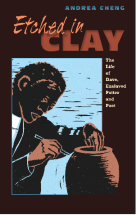 Over the past several weeks, I’ve been modeling how to do a close reading at several different grade levels. Next up: Close Reading in Fourth Grade using the T level text Etched in Clay: The Life of Dave, Enslaved Potter and Poet written and illustrated by Andrea Cheng, out this January!
Over the past several weeks, I’ve been modeling how to do a close reading at several different grade levels. Next up: Close Reading in Fourth Grade using the T level text Etched in Clay: The Life of Dave, Enslaved Potter and Poet written and illustrated by Andrea Cheng, out this January!
One way to structure close reading questioning is to use the format laid out by the Institute for Learning of the University of Pittsburgh. Under their framework, students read the text selection four times: first, to get the gist; second, to find significant moments or ideas; third, to interpret the ideas in the text; and finally, to analyze the author’s methods (craft). Here’s an example of how to plan out your questions for close reading of the introduction through the first 13 pages of Etched in Clay:
1st reading (read to get the gist):
- Who is Dr. Abner Landrum? What have we learned about him? What can we infer about him so far? Cite evidence from the text to support your answer.
- Who is Harvey Drake? What have we learned about him? What can we infer about him so far? Who is Amos Landrum? How is Harvey different than Amos? Cite evidence from the text to support your answer.
- Who is Dave? What have we learned about him? What can we infer about him so far? How does he feel about the work he’s been given to do? About being renamed “Dave”? About his first pottery lesson? Cite evidence from the text to support your answer.
- What major events have occurred so far? How much time has passed? During what period in history are the events taking place? How do you know? What do you know about this period in American history that can help your reading of the text? Cite evidence from the text to support your answer.
- What was important to Dr. Abner Landrum? Cite evidence from the text to support your answer.
2nd reading (read to find significant moments or ideas):
- What is the most important thing you learned or that happened in this section of the text? Why is it significant? Cite evidence from the text to support your answer.
3rd reading (read to interpret ideas):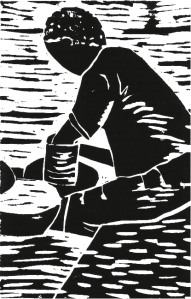
- In the poem “Augusta Auction”, how does the auctioneer view Dave? How does Harvey Drake view Dave? What can you infer about how Harvey Drake feels about slavery? Cite evidence from the text to support your answer.
- On page 7 in the poem “Augusta Auction,” Harvey Drake describes the slaves at auction as follows: “The Negro mothers wail/while their children cling to them/like melons to their vines.” Cheng’s passage serves two purposes, one descriptive and one historical/sociological. Discuss the dual meanings of the image she creates. Cite evidence from the text to support your answer.
4th reading (read to analyze the author’s methods/craft):
- How is this text organized? How is it different than other biographical texts or historical fiction you’ve read? How is it similar? Cite evidence from the text to support your answer.
- Who is the audience for this text? Why does Andrea Cheng consistently shift narrator? What effect does this have on how the story is told and how the information is presented? Cite evidence from the text to support your answer.
- What are some of the strongest images Cheng has created so far? How do these images set the mood for the piece? Cite evidence from the text to support your answer.
By asking students to ground their responses in the text by citing text-based support for their answers, the following Common Core Standard is addressed:
Reading Literature, Grade 4, Key Ideas and Details, Strand 1: Refer to details and examples in a text when explaining what the text says explicitly and when drawing inferences from the text.
How does close reading look in your classroom? Any tricks and tips to share?
Further reading:
Filed under:
Curriculum Corner,
Resources Tagged:
Andrea Cheng,
close reading,
common core standards,
Etched in Clay,
guided reading,
History,
Reading Aloud,
reading comprehension,
slow reading 


By:
Jaclyn DeForge,
on 12/3/2012
Blog:
The Open Book
(
Login to Add to MyJacketFlap)
JacketFlap tags:
Resources,
Reading Aloud,
Educators,
reading comprehension,
Ken Mochizuki,
close reading,
Baseball Saved Us,
Dom Lee,
common core standards,
slow reading,
Curriculum Corner,
guided reading,
Add a tag
 Jaclyn DeForge, our Resident Literacy Expert, began her career teaching first and second grade in the South Bronx, and went on to become a literacy coach and earn her Masters of Science in Teaching. In her column she offers teaching and literacy tips for educators.
Jaclyn DeForge, our Resident Literacy Expert, began her career teaching first and second grade in the South Bronx, and went on to become a literacy coach and earn her Masters of Science in Teaching. In her column she offers teaching and literacy tips for educators.
Over the past several weeks, I’ve been modeling how to do a close reading at several different grade levels. Next up: Close Reading in Third Grade using the O level text Baseball Saved Us by Ken Mochizuki and illustrated by Dom Lee.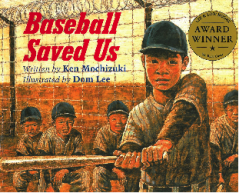
One way to structure close reading questioning is to use the format laid out by the Institute for Learning of the University of Pittsburgh. Under their framework, students read the text selection four times: first, to get the gist; second, to find significant moments or ideas; third, to interpret the ideas in the text; and finally, to analyze the author’s methods (craft). Here’s an example of how to plan out your questions for close reading of just the first 8 pages of Baseball Saved Us:
1st reading (read to get the gist):
- Which characters have we met so far in the story? What do we know about each character so far? Cite evidence from the text to support your answers.
- Where does the story take place? In what country? During what period in history? How do you know? Cite evidence from the text to support your answers.
- How did the characters get to the camp? Why are they there? What is the purpose of the camp? What hardships did the main character’s family face at the camp? How is life at the camp similar to or different from life at home? How does life at the camp affect the people in the story? How do you know? Cite evidence from the text to support your answers.
- Summarize what you have learned about the narrator. How does he see himself? How do others view him? How do you know? Cite evidence from the text to support your answers.
2nd reading (read to find significant moments or ideas):
- What is the most important thing you learned or that happened in this section of the story? Why is it significant? Cite evidence from the text to support your answers.

3rd reading (read to interpret ideas):
- The characters in Baseball Saved Us were Japanese Americans who lived on the West Coast at a time when the United States was fighting a war with Japan. Do you think it was fair for the government to take them from their homes and make them move into an internment camp? Why do you think the government made this decision? Do you agree with the decision? What does it mean to be an American? Do you think the author would agree with you? Do you think the character of Dad would agree with you? Why or why not? Cite evidence from the text to support your answers.
4th reading (read to analyze the author’s methods/craft):
- Based on what you have read so far, how do you think author Ken Mochizuki feels about Japanese internment during World War II? How does he want you to feel about internment camps, specifically about the camp in the story? How do you know? What details does he choose to include in order to influence the reader? Cite evidence from the text to support your answers.
- What is the mood of the story so far? How does illustrator Dom Lee create this mood in his illustrations? Cite evidence from the text to support your answers.
By asking students to ground their responses in the text by citing text-based support for their answers, the following Common Core Standard is addressed:
Reading Literature, Grade 3, Key Ideas and Details, Strand 1: Ask and answer questions to demonstrate understanding of a text, referring explicitly to the text as the basis for the answers.
How does close reading look in your classroom? Any tricks and tips to share?
Further reading:
Filed under:
Curriculum Corner,
Resources Tagged:
Baseball Saved Us,
close reading,
common core standards,
Dom Lee,
Educators,
guided reading,
Ken Mochizuki,
Reading Aloud,
reading comprehension,
slow reading 


By:
Jaclyn DeForge,
on 11/12/2012
Blog:
The Open Book
(
Login to Add to MyJacketFlap)
JacketFlap tags:
literacy,
Language,
Resources,
Educators,
reading comprehension,
close reading,
common core standards,
slow reading,
Curriculum Corner,
guided reading,
close reading in second grade,
Add a tag
 Jaclyn DeForge, our Resident Literacy Expert, began her career teaching first and second grade in the South Bronx, and went on to become a literacy coach and earn her Masters of Science in Teaching. In her column she offers teaching and literacy tips for educators.
Jaclyn DeForge, our Resident Literacy Expert, began her career teaching first and second grade in the South Bronx, and went on to become a literacy coach and earn her Masters of Science in Teaching. In her column she offers teaching and literacy tips for educators.
Before I start discussing close reading in the second grade classroom, I want to take a minute to acknowledge educators and students across the Northeast, who over the past two weeks have dealt with not just superstorm Sandy, but a Nor’easter! Some schools sustained significant flooding and damage, or have classrooms without heat or power. And in some areas, even though the children are back in the classrooms, after a long day teachers and students head home to clean and repair damage sustained to their own homes and communities. And last week, they did that in the wind and snow. If that’s not dedication, I don’t know what is. My thoughts are with everyone who continues to be affected by this awful streak of weather.
Now, back to our regularly scheduled programming. Over the next several weeks, I’ll be modeling how to do a close reading at several different grade levels. Last week, I wrote about close reading in first grade. Next up: Close Reading in Second Grade using the L level text Under the Lemon Moon by Edith Hope Fine and illustrated by Rene King Moreno.
In terms of student questioning, start general and move up Bloom’s Taxonomy by gradually increasing the rigor. For example, say you want to focus your close reading of Under the Lemon Moon on author’s craft, specifically focusing on language and word choice in just the first six pages of the story (2nd grade reading standard for literature, Craft and Structure, strand 4, AND 2nd grade language standards, Vocabulary Acquisition and Use, strands 4-6 from the Common Core Standards). Here are the questions I would ask:
Question 1 (Knowledge): Can you list several examples of onomatopoeia in the story so far? Why do authors use onomatopoeia?
 Question 2 (Comprehension & Analysis): How would you rephrase the meaning of “mi arbolito”? What clues does the author give you as to the meaning of that phrase? What language is that phrase? How do you know? What clues does the author give you? Why do you think the author chose to include Spanish words and phrases in this story?
Question 2 (Comprehension & Analysis): How would you rephrase the meaning of “mi arbolito”? What clues does the author give you as to the meaning of that phrase? What language is that phrase? How do you know? What clues does the author give you? Why do you think the author chose to include Spanish words and phrases in this story?
Question 3 (Comprehension): What details does Edith Hope Fine include on the first page to set the scene for the story? Why does she choose to include these details?
Question 4 (Application): Edith Hope Fine has chosen strong, specific verbs so far. For example, on page 5, she uses the strong, specific verb “crooned” instead of the everyday verb “sang.” What are some other examples of strong, specific verbs that Edith Hope Fine used to describe characters’ actions?
Question 5 (Analysis): In the beginning of the story, instead of telling us Rosalinda scared the Night Man away, Edith Hope Fine described what Rosalinda and Blanca did that caused the Night Man to cry out and run away. Can you identify other parts in the story where the author used that same “show not tell” strategy?
Question 6 (Synthesis): What words or images did the author use to build suspense? What other words or details would you add to the story to further build suspense?
Question 7 (Evaluation): Edith Hope Fine chooses to name the stranger in the garden “Night Man.” Why do you think she made the choice to give him a name? Do you agree with her choice of name? What would you have called the stranger in the garden if you were writing the story?
Additional questions to ask:
- Make a list of words that were unfamiliar to you before you read this story. How did you figure out what these words meant?
- Choose the most important sentence from the story so far. Why did you choose this sentence? Why do you feel it is so important?
- Choose a word that you learned or particularly liked from the beginning of the story. Write the meaning of the word in your own words, then draw a picture that shows what the word means.
- Choose a word that best represents the story so far. Is there a time in your life when this word applied to or was important to you? Is there a time when this word was important in another text you read?
- List some descriptive words Edith Hope Fine uses to set the scene or to show characters thoughts, actions and feelings.
- What techniques did the author use to hook you into the story? To make the story suspenseful? To make the writing lively?
- So far, what word best describes Rosalinda? Cite evidence from the text to support your answer.
- What words or phrases from the story helped you visualize the story?
What are your favorite questions to ask when doing a close reading focused on author’s craft, language and word choice?
Further reading:
What does close reading look like in First Grade?
What does close reading look like in Kindergarten?
What is close reading?
Filed under:
Curriculum Corner,
Resources Tagged:
close reading,
close reading in second grade,
common core standards,
Educators,
guided reading,
Language,
literacy,
reading comprehension,
slow reading 

View Next 7 Posts










































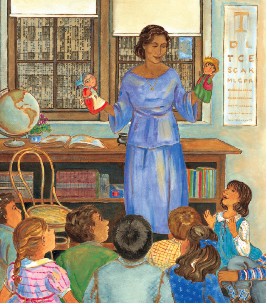
 Jaclyn DeForge, our Resident Literacy Expert, began her career teaching first and second grade in the South Bronx, and went on to become a literacy coach and earn her Masters of Science in Teaching. In her column she offers teaching and literacy tips for educators.
Jaclyn DeForge, our Resident Literacy Expert, began her career teaching first and second grade in the South Bronx, and went on to become a literacy coach and earn her Masters of Science in Teaching. In her column she offers teaching and literacy tips for educators.








[…] In this series, I’ve looked at: Integrating reading, writing, speaking, and listening in grades K-1 Integrating reading, writing, speaking, and listening in grades 2-3 […]